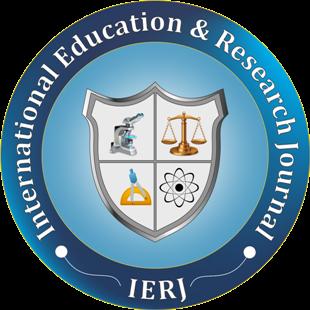Mrs.P.Chitra,Ms.P.Harivadhana,Ms.G.Poongodi,Ms.M.Ramalakshmi,Ms.R.Sharmili
1M.Sc.(Nursing),VVVanniaperumalNursingCollegeforWomen,Virudhunagar 2AssociateProfessor,VVVanniaperumalNursingCollegeforWomen,Virudhunagar 3 IIIYearB.Sc.(Nursing)Students,V.V.VanniaperumalNursingCollegeforWomen,Virudhunagar
ABSTRACT
Background:PregnantwomendonotseemtobeathigherriskofgettingSARS-CoV-2,thevirusthatcausesCOVID-19.However,studieshaveshownanincreased risk of developing severe COVID-19 if they are infected, compared with non-pregnant women. COVID-19 during pregnancy has also been associated with an increasedlikelihoodof pretermbirth. Objectives:Toassess thelevelofknowledgeregardingpregnancyandchildbirthduringCOVID-19 amongB.Sc(Nursing) students. Methods: It was a descriptive study conducted atV.V.Vanniaperumal Nursing College for women inVirudhunagar.The tool consists of Self-structured knowledgequestionnaireanditwasusedtoassessthelevelofknowledge.Quantitativeresearchdesignandpurposivesamplingtechniquewasusedinthisstudy Results:Itrevealedthat95%ofB.Sc(Nursing)studentshadmoderatelyadequateknowledge,4%ofB.Sc(Nursing)studentshadinadequateknowledge,and1%of B.Sc(Nursing)studentshadadequateknowledge.Conclusion:Pregnancyisnotmuchaffectedbythediseaseitselfbutcomplicationsmayariseinabsenceoftimely careandcaution.Boththeexpectingmotherandcare-providershouldbevigilantandtheroutineobstetricmanagementshouldnotbedelayedduetotestingorreports ofCOVID-19infection.Thestudyemphasizedtheneedforeffectivein-serviceeducationonpregnancyandchildbirthduringCOVID-19.
KEYWORDS:PregnancyandChildBirthDuringCovid19,B.sc(N)Students.
INTRODUCTION:
Corona virus is a large family of viruses that can cause disease from mild to severe symptoms. COVID-19 attacks people of all ages including vulnerable groupssuchaspregnantwomen.Numberofpreviousresearchesonthecorona virus,statedthatpregnantwomenhaveahigherriskofseveredisease,morbidity andmortalitycomparedtothegeneralpopulation.Maternalandchildhealthcare services are of paramount importance for public healthcare delivery systems, especiallyinlow-andmiddle-incomecountries.ThousandsofwomeninIndia dieeveryyearduetopregnancyandchildbirth-relatedcomplicationswhileasignificant number of children suffer from vaccine-preventable diseases. Current maternal mortality ratio (MMR) in India is 113 per 100000 live births and the infant mortality rate (IMR) in India is 32 per 1000 live births. Well-designed, proper and timely availability of antenatal care (ANC) services, delivery services,andpostpartumcarealongwithinfantcareandmandatoryimmunizations formacircleofimprovedmaternalandchildhealth.Disruptionatanystepmight leadtoadverseoutcomes.
Pregnantwomenshouldcontinuevisitingtheirconsultingphysicianormaternity center if they are not in any containment zone. They should wear mask while attending the clinic and should keep physical contact with the objects and personstoaminimum.Anywomencomingforantenatalcheck-uporotherwisehavingsuspicionorconfirmationofCOVID-19shouldbeexaminedbyhealthcare workerafterwearingfullpersonalprotectiveequipment.
PregnantwomenwithCOVID-19-positivityshouldbetreatedforfever,pain,or coughing;inmoresevereillness,hospitalizationshouldberecommended.There iscurrentlynoevidencetofavourvaginalorcaesareandeliveryandthereforeit shouldbediscussedwiththewoman,takingintoconsiderationherpreferences and any obstetric indications for intervention. Mode of delivery should not be influencedbythepresenceofCOVID-19,unlessthewoman'srespiratoryconditiondemandsurgentinterventionforbirth.
World Health Organization recommended breastfeeding to the infant for all postpartumwomenirrespectiveoftheCOVID-19statusasthebenefitsofbreast milk outweighs the risk of COVID-19 by the neonate. Despite the ability of SARS-CoV-2 to vertically transmit from infected mother to child and its presence in the breast milk of infected women, special precautions are always requiredtominimizethecross-infectionofsurroundingpeople,suchasrelatives, friends, and healthcare providers. With this in mind, this study assesses the knowledge regarding covid-19 during pregnancy and child birth among B.sc (nursing)studentsinselectedcollege.
NEEDFORTHESTUDY:
COVID-19becomesseriousattentioninpublichealthafterbeingrecognizedas thefirstcaseofcoronavirusdisease2019inDecember2019,inWuhan,china;it hasquicklyspreadglobally,promotingtheworldhealthorganization(WHO)to declare it a pandemic on 12 March 2020.As of 6 may 2020, theWorld Health Organization has reported 3,588,773 COVID-19 cases (including 2476,503
deaths)inmorethan210countriesandregions.IndiareporteditsfirstCOVID19 case on 30 January 2020, in Kasaragod town in the state of Kerala and reported 49,391 cases (including 1,694 deaths) by 6 may 2020 nationwide lockdown was declared in India on 25 March 2020, which has been extended until31may2020.Thecitizenswereadvisedtostayathomeandmaintainsocial distancing.
In2009,pregnantwomenaccountedfor1%ofpatientsinfectedwithinfluenzaA subtype H1N1 virus, but they accounted for 5% of all death( Rasmussen et al 2009).Alfaraja2019,SARSCoVandMERSCoVarebothknowntoberesponsibleforseverecomplicationsduringpregnancy
According to 2016 World Health Organization reports, an estimated 303,000 womendiedfrompregnancy-relatedcomplicationsandwithinthefirstmonthof life,around2.7millionnewbornsdiedduetoCOVID-19.Amongthesedeaths, 2.6millionwerestillborn.Studiesshowthatprovidingqualityhealthcareduring pregnancy and childbirth can prevent many of these deaths.TheWorld Health OrganizationhasproposedaminimumofeightcontactsforAntenatalcare;such an increased number of contacts can decrease perinatal deaths by up to 8 per 1,000birthswhencomparedtoaminimumoffourvisits.
DuringthisCOVID-19pandemic,WorldHealthOrganizationrecommendedsix in-personvisitsandtwovirtualvisits(3rdand4th)toreducethenumberoftimes the patient needs to travel and attend hospital/clinics. Using strategies like the involvementofCommunityhealthworkers,utilizingmobilehealthcareservice, and taking advantage of mass media communication on identifying the danger signsduringpregnancycouldpartlymitigatethechallengelessin-personvisits andmoreonlineconsultationsareusedinmanyplacestoprovideAntenatalcare duringtheongoingCOVID-19pandemic,withencouragingfeedbackfromboth carerecipientsandproviders.
STATEMENTOFTHEPROBLEM:
ADescriptivestudytoassesstheknowledgeregardingCOVID-19duringpregnancy and child birth among B.sc (Nursing) students in selected college at Virudhunagar

Ÿ
OBJECTIVES:
To assess the level of knowledge regarding COVID -19 during pregnancy andchildbirthamongB.Sc(Nursing)students.
Ÿ
To associate the knowledge regarding COVID-19 during pregnancy and childbirthwithselecteddemographicvariables.
HYPOTHESIS:
Therewillbeastatisticallysignificantassociationbetweenknowledgeregarding COVID-19 during pregnancy and childbirth with selected demographic variableslikeage,education,typeoffamily,sourceofinformationandplaceofresidence.
Ÿ
Delimitation:
This study is delimitated to only V.V.Vanniaperumal Nursing College for Women,Virudhunagar
Ÿ
Ÿ
This study is delimitated to only III Year and IV year B.Sc (Nursing) students.
Thedatacollectionperiodisonlyforoneweek.
METHODOLOGY:
Quantitative research approach with Non-Experimental descriptive research designwasusedinthisstudy ThesampleofthepresentstudywasIIIyear&IV YearstudentsthosewhoarestudyingB.Sc(Nursing)inV.V.VanniaperumalNursingCollegeforWomenatVirudhunagar Thestudyconductedforaperiodofone week. 78 samples were selected through purposive sampling technique on the basisofselectioncriteria.Afterthattheinvestigatorcollectedthedemographic datafromnursingstudents.Self-Structuredknowledgequestionnairewereused toassesstheknowledgeregardingpregnancyandchildbirthduringCOVID-19 amongB.Sc(Nursing)students.Thequestionnaireconsistsof25multiplechoice questions. The data were collected, tabulated and analyzed by using statistical method based on objectives. Descriptive and inferential statistics were used to analyzethedata.
DATAANALYSISANDINTERPRETATION:
Table1:Distributionofsubjectsbasedonthelevelofknowledge N=78
IV LathaVenkatesan,et.al.(2021)“AntenatalcareonpregnantmothersduringCOVID19 pandemic”. Journal of Obstetrics and Gynecological Nursing, Volume IX, Jan – Jun 2021,39–45.
V Ryan wai kheong lee, et.al (2020). “Attitudes and precaution practices towards COVID-19amongpregnantwomeninSingapore”:across-sectionalsurvey.BMCpregnancyandchildbirth,20:675.
VI. WenpingDing,et.al(2021).Knowledge,attitudes,practices,andinfluencingfactorsof anxietyamongpregnantwomeninWuhanduringtheoutbreakofCOVID-19:acrosssectionalstudy BMCpregnancyandchildbirth,21:80.
VII. Worldhealthorganization(2022).Coronavirusdisease(COVID-19):Pregnancy,childbirthandthepostnatalperiod.
VIII.XiaotongWang,et.al(2020).ACaseof2019NovelCoronavirusinaPregnantWoman withPretermDelivery NationalLibraryofMedicine,Jul28;71(15):844-846
Outof78samples4%ofstudentshadadequateknowledge,95%ofstudentshad moderatelyadequateknowledgeand1%ofstudentshadinadequateknowledge aboutpregnancyandchildbirthduringCOVID-19.

Associationofknowledgewithdemographicvariables: There was a statistically significant association between knowledge andAge (19.88*)typesoffamily(12.46*)andtherewasnostatisticallysignificantassociation between knowledge and education (10.34#), source of information (3.49#)andplaceofresidence(5.28#).
CONCLUSION:
COVID19isaglobalpublichealthemergency Theimmunesystemispartially suppressed during pregnancy; pregnant women are more vulnerable to viral infectionsandtheircomplications;thusCOVID19pandemicmighthaveserious consequencesforpregnantwomen(Chenatal2012),manychallengesstillexist for the obstetric care provider Social distancing, prenatal care spacing and increased telehealth prenatal visits are recommended to keep patients and providerssafe.
REFERENCES:
I. Alemu Degu, et.al (2020).”Knowledge and Attitude towards the Current Pandemic Corona Virus Disease and Associated Factors among Pregnant Women” Attending AntenatalCareinDebreTaborGeneralHospitalNorthwestEthiopia:AnInstitutionalBasedCross-SectionalStudy InternationalJournalofwomen’shealth,13:61–71.
II. Alfaraj,S.H.(2019)“MiddleEastRespiratorySyndromeCoronavirus(MERS-CoV) infectionduringpregnancy:Reportoftwocases&reviewoftheliterature”Journalof Microbiology,Immunologyandinfection,52,501-503.
III. David A Schwartz, et.al (2020) Potential Maternal and Infant Outcomes from Coronavirus 2019-nCoV (SARS-CoV-2) Infecting Pregnant Women: Lessons from SARS, MERS, and other Human Coronavirus Infections. National Library of Medicine,12(2):194.
